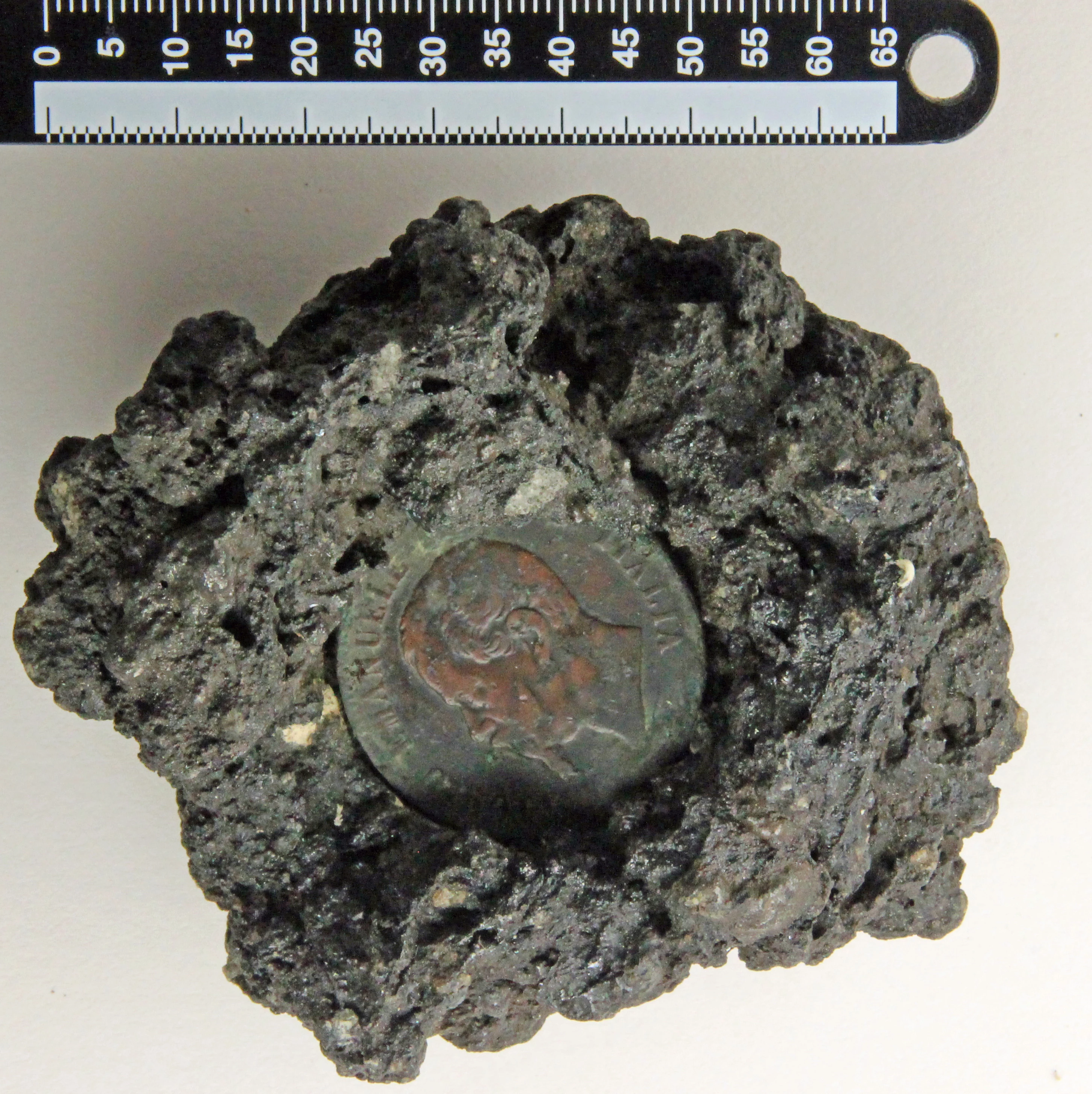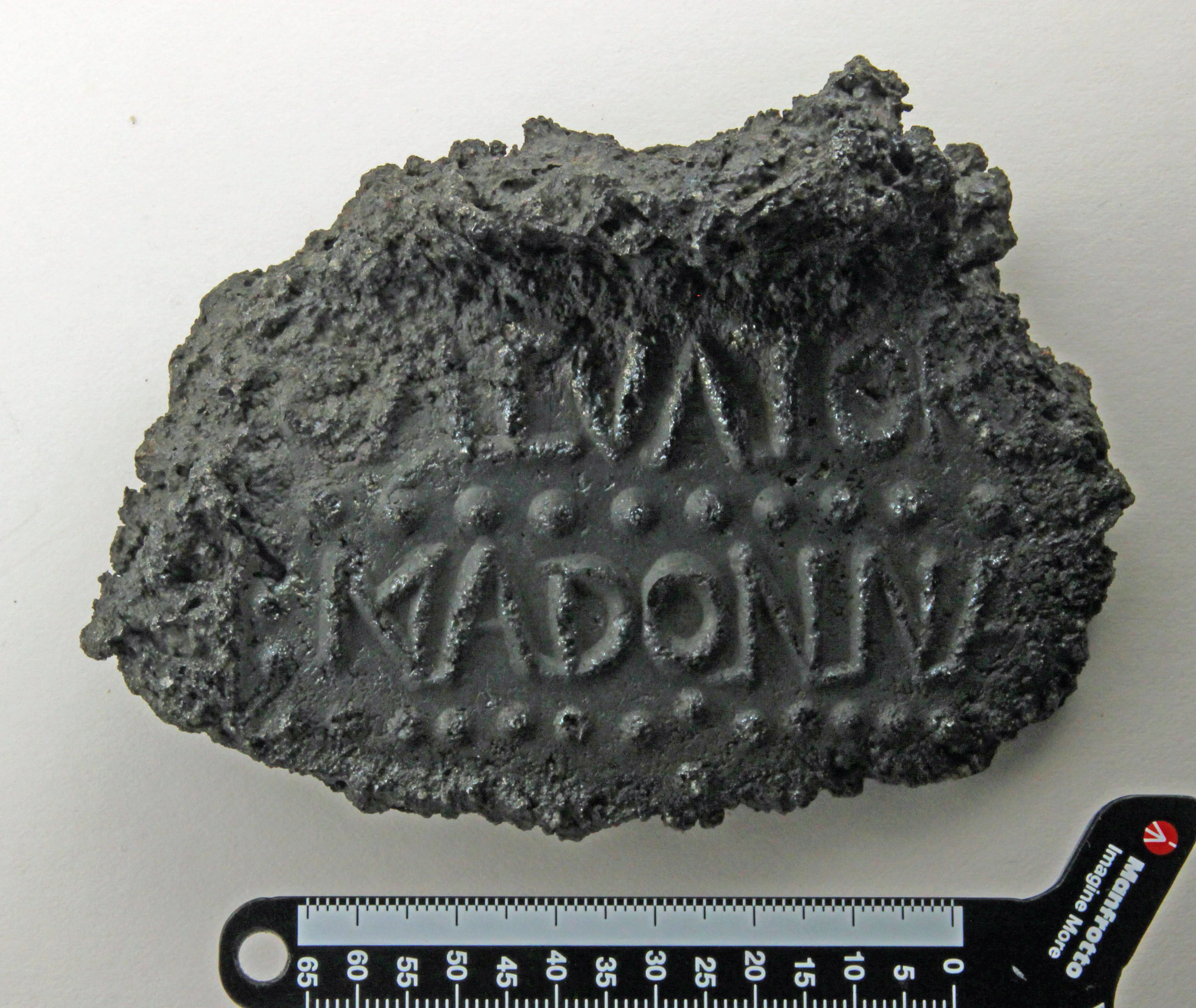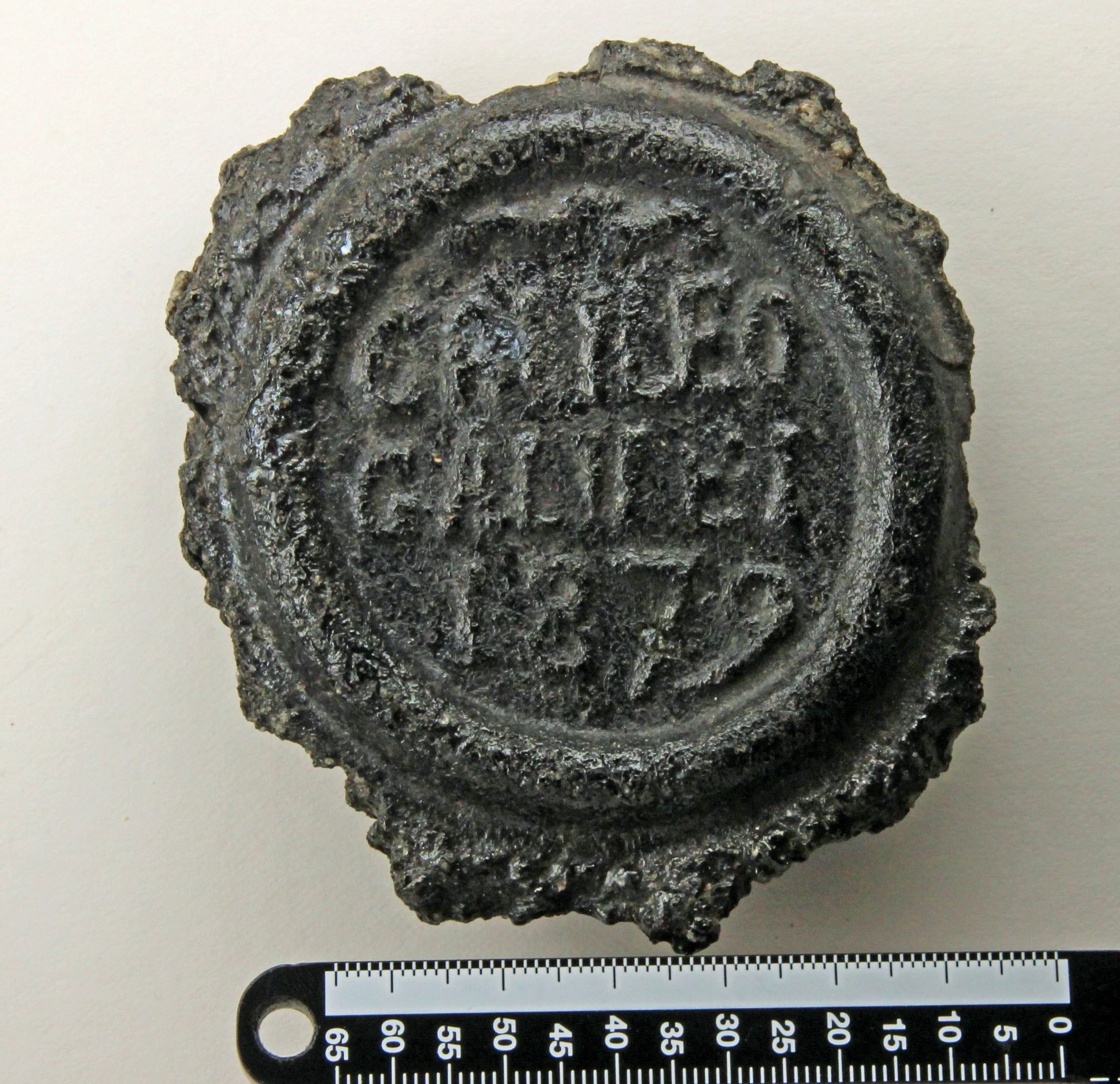Lava medallions - Souvenirs from a volcano
, 22 Hydref 2018
Lava medallions and coins in lava from Mount Vesuvius, Italy
The National Museum Wales Petrology (Rock) collection comprises 35,000 specimens, with many interesting rock samples from across Wales and the wider World. In the drawers of the Italian collection, alongside the pumice, volcanic ash and obsidian are these curious rocks.
What are lava medallions?
They are called lava medallions, medals or tablets, and along with coins embedded in lava they were probably first produced in the mid-18th Century when the ‘Grand Tour’ become fasionable among the wealthy elite of Europe. Taking in European cities like Paris, Rome, Venice, Florence and Naples, the ‘students’ would travel with a tutor on a Grand Tour to learn about languages, geography, culture, art and architecture. When passing through Naples, the volcano of Mount Vesuvius (Vesuvio) became a must see stop on the tour. Forget postcards, fridge magnets and selfies, the take home souvenir of the day was the lava medallion!
People have long been fascinated by destructive power of Mount Vesuvius, the volcano had lain dormant for centuries before the famous eruption in 79 A.D. when the Roman cities of Pompeii and Herculaneum were destroyed. Over the last two thousand years, the volcano has erupted many times. Between eruptions, Vesuvius can lie almost dormant for long periods of time before erupting violently once again. Volcanoes the world over that erupt in this explosive style after long periods of dormancy are known as Vesuvian eruption volcanoes.
How were lava medallions made?
To make a lava medallion, molten lava would have been retrieved (by some very brave individual with a long stick!) from a recent lava flow or lava close enough to the surface that was accessible and still hot enough to be malleable. It was then moulded, pressed with a stamp, or embedded with a coin, cooled in a bucket of water and sold to a passing grand tourist.
The French Revolution in 1789 marked then end of Grand Tours as they were known, but with the advent of the railways in the early 19th Century and the beginnings of mass tourism, these distinct souvenirs once again became popular take-home keepsakes, and they were produced in their thousands.
Over the years many of these medallions and lava coins have found their way into museum collections across the world. They often depict kings, Roman Emperors, famous scientists or events. All of the medallions and coins in the AC NMW collection date from the 19th Century, and originate from Mount Vesuvius, but examples in other collections have originated from Mount Etna, Sicily.
If you would like to know more about lava medallions, please contact Andrew Haycock via:
https://museum.wales/staff/665/Andrew-Haycock/









sylw - (3)